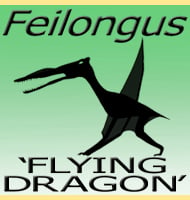Feilongus
In Depth The only known example of the pterosaur Feilongus is incomplete and has been damaged in the fossilisation process. Only the skull, mandible and parts of the braincase are preserved. What can be gleamed from the fossil is that Feilongus had a large overbite with the upper jaw extended up to 2.7 centimetres beyond … Read more
